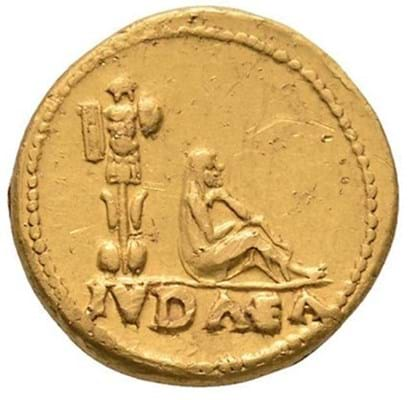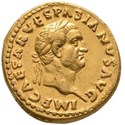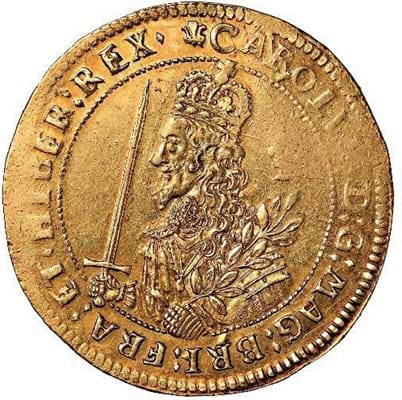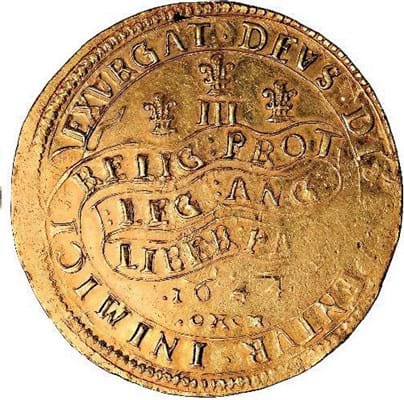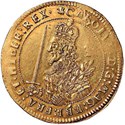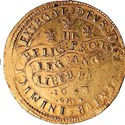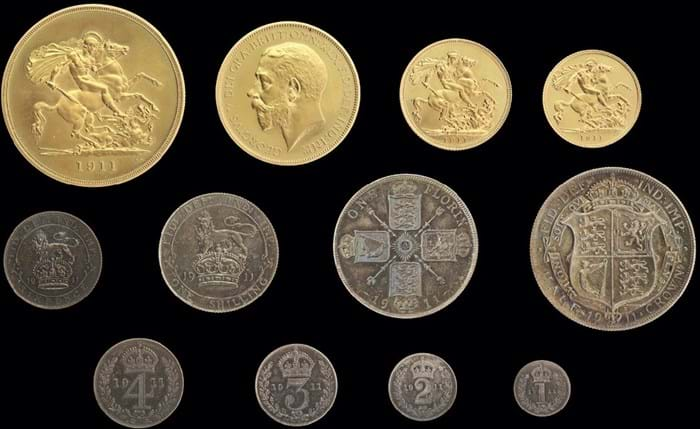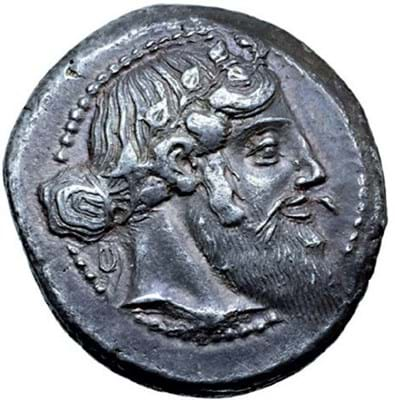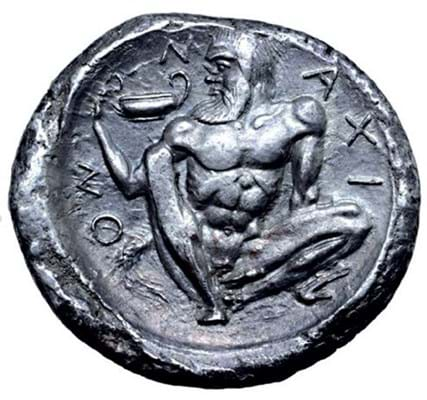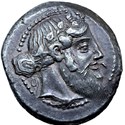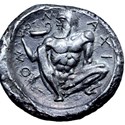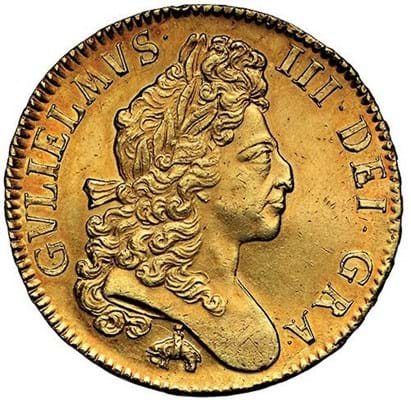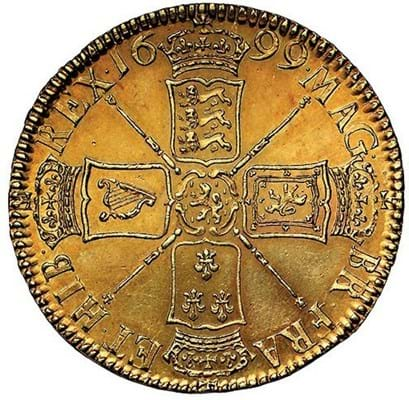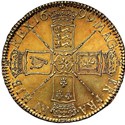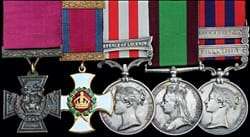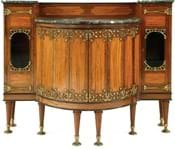TimeLine
Found near Ferrybridge, West Yorkshire, in 2018, this gold aureus commemorated the success of Vespasian and Titus in defeating the First Jewish Revolt. Minted in Rome shortly after the rebellion was put down c.69-70AD, the reverse depicts the nation of Judaea as a mourning captive seated at the foot of a trophy.
A rare coin in ‘almost extremely fine’ condition, it took £13,500 (plus 25% VAT inclusive) at TimeLine Auctions of Harwich, Essex, on November 24.
Dix Noonan Webb

General Officers’ Gold Medal awarded to General Sir Thomas Hislop (1764-1843) – £85,000 at Dix Noonan Webb.
A rare General Officers’ Gold Medal complete with gold fitments and ribbon was sold for £85,000 (plus 20% buyer’s premium) by Dix Noonan Webb on May 9-10.
It was awarded to General Sir Thomas Hislop (1764-1843), a veteran and sometimes controversial campaigner whose career included the Siege of Gibraltar (1780-83), command of the First Division at the capture of Guadeloupe in 1810, a four-hour engagement with the USS Constitution during the War of 1812 and Commander-in-Chief of Army of the Deccan at the victory at Maheidpore in 1817.
As engraved verso, he was given this rare award for his actions at Guadeloupe. The Army Gold Medal, designed by Thomas Wyon, was established in 1810 to reward the service of senior officers.
English Civil War Medal

A small oval silver medal designed by the Thomas Simon (c.1623-65) with a scene of an assembled Parliament – £8000 at Dix Noonan Webb.
This medal documents a little-known moment in the history of the English Civil War – the destruction of the 450-ton Royalist warship Antelope in Helvoetsluys in the western Netherlands.
In April 1649 the Council of State ordered its sinking – a task completed under the command of Lt Stephen Rose who burned the vessel as she lay at anchor, in violation of Dutch territorial waters.
Those who took part in the exploit were rewarded early in 1650 with cash prizes and a small oval silver medal, designed by the English medallist Thomas Simon (c.1623-65) with a scene of an assembled Parliament and both English and Irish emblems verso. Only six examples are known.
One of them was offered for sale by Dix Noonan Webb in London on October 3, where it took a triple-estimate £8000 (plus 20% buyer’s premium).
Spink
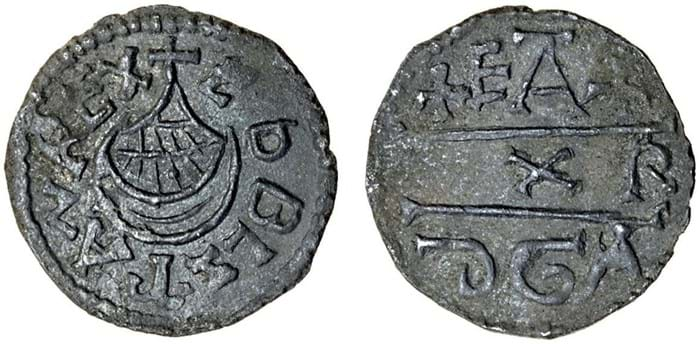
Silver penny struck during the early years of the reign of Aethelstan of East Anglia (c.825-845) – £48,000 at Spink.
The first part of the Alan Williams collection – an archive of Anglo-Saxon, Viking and Norman coinage that was 40 years in the making – was sold by Spink on March 26. It included this silver penny struck during the early years of the reign of Aethelstan of East Anglia (c.825-845).
Copying designs of Carolingian coins of the period, it includes the name of the monarch around a ship of a type introduced some time during the last years of Charlemagne.
Only one other Aethelstan penny with a ship on the obverse is recorded. Dug in West Harling in 1977, it was subsequently acquired by the Castle Museum, Norwich.
This example, in much better condition, includes the moneyer’s name, Edgar. The hammer price was £48,000 and – as it came from outside the EU – the hammer price was subject to 5% import tax as well as the 20% buyer’s premium.
Baldwin’s of St James’s
An ‘extremely fine’ Charles I triple unite struck during the English Civil War at the Oxford mint in 1644 was offered at Baldwin’s of St James’s on September 28.
Very few of these massive coins, each valued contemporaneously at three pounds sterling, survived the conflict.
The Latin legend in three bands of a wavy scroll includes Charles’ declaration to protect Parliament, liberty and the Protestant religion and a battle cry that expressed more hope than reality. ‘Exurgat Deus Dissipentur Inimici’ translates as Let God Arise, Let His Enemies Be Scattered.
This example, with a provenance dating back to 1896 when it sold for £12-8s-0d, took £41,000 (plus 25% buyer’s premium) at
Bonhams
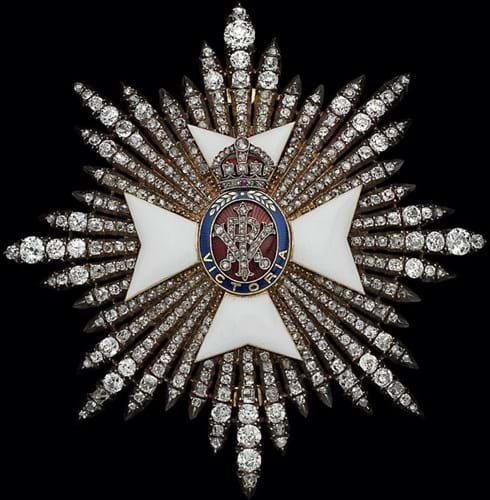
Knight Grand Cross Royal Victorian Order (GCVO), awarded to the 1st Viscount Churchill in 1902 – £78,000 at Bonhams.
This gem-set and enamel Knight Grand Cross Royal Victorian Order (GCVO), awarded to the 1st Viscount Churchill in 1902, sold for £78,000 (plus 20/15% buyer’s premium) at Bonhams on November 21. It had carried an estimate of £7000-9000.
The Royal Victorian Order was established in 1896 by Queen Victoria to recognise distinguished personal service to the monarch. There are variations on the badge for each of the five grades of the order with this, the Knight Grand Cross, being the highest. Major Victor Albert Spencer Churchill (1864-1934) served as lord chamberlain at Edward VII's coronation in 1902 and was a lord in waiting in both of Salisbury's governments.
George V 1911 specimen set
Also at Bonhams, with only a couple of small nicks to the gold Five Pounds to count against it, this George V 1911 specimen set (from the Five Pounds to a Maundy penny) in the Royal Mint case of issue sold for £13,000 (plus 20% buyer’s premium) on November 21.
London Coins
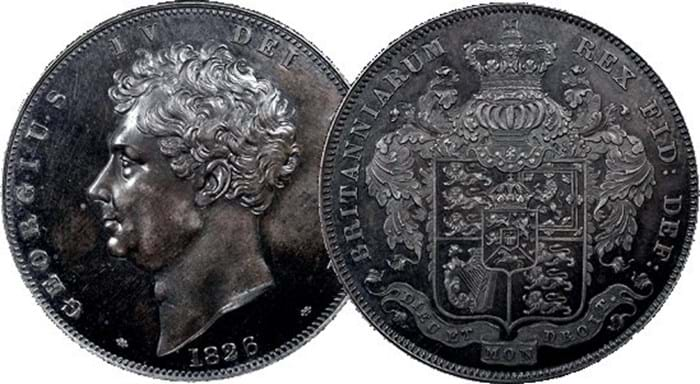
1826 silver proof crown – £14,000 at London Coins.
This deeply toned 1826 silver proof crown, showing the new portrait of George IV with the word Septimo to the edge, has been graded PR64 – rating it as a much better-than-average strike.
It sold for £14,000 (plus 17% buyer’s premium) at London Coins on December 3.
Morton & Eden
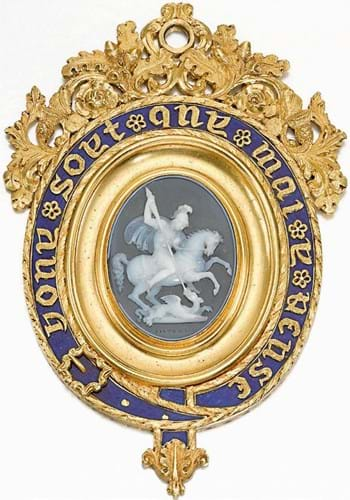
Lesser George sash badge of The Most Noble Order of the Garter – £135,000 at Morton & Eden in conjunction with Sotheby’s.
The sale held by Morton & Eden in conjunction with Sotheby’s on July 3 comprised 80 orders and medals from the collection of George, 2nd Duke of Cambridge (1819-1904) and his father. The collection, displayed at the Guards Museum, Birdcage Walk, had passed by descent.
Topping the sale at £135,000 (plus 25% buyer’s premium) was a Lesser George sash badge of The Most Noble Order of the Garter. The twin to another in the royal collection given in 1878 to the future Edward VII, it includes a cameo by the celebrated gem engraver Benedetto Pistrucci and a gold and blue enamel mount by jeweller William Clutton.
Roma Numismatics
One of the great masterpieces of ancient Greek numismatic art, this silver tetradrachm was struck c.460 BC in commemoration of the refounding of the city of Naxos. Its citizens had been exiled to Leontinoi by the tyrant Hieron of Syracuse. The artist, unknown but deemed the most accomplished engraver of his time, combines a fine portrait of a bearded Dionysos with a striking image of Silenos squatting on the floor as he drunkenly gazes into his wine cup.
This ‘extremely fine’ example was probably from the so-called Randazzo Hoard of tetradrachms, found somewhere in north-eastern Sicily in late 1980 and immediately dispersed in commerce. Roma Numismatics sold it for £154,000 (plus 20% buyer’s premium) on September 26.
Sovereign Rarities
A succession of strong results were posted for gold Five Guineas pieces when Mayfair coin dealership Sovereign Rarities conducted its first auction on September 25. Some coins made 10 times or more the prices they had fetched earlier this century.
Among the rarest of all William III issues is the five guineas that includes, below a laureate bust, an elephant and castle motif – the badge of the African company that supplied gold bullion to make this coinage in 1699.
The very well-preserved example last sold as part of a collection of five-guinea pieces at Morton & Eden in December 2003 for £8000. Last year, estimated at up to £45,000, it sold at £155,000 (plus 20% premium).



